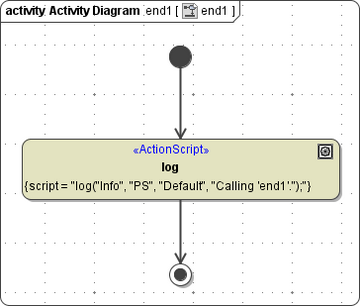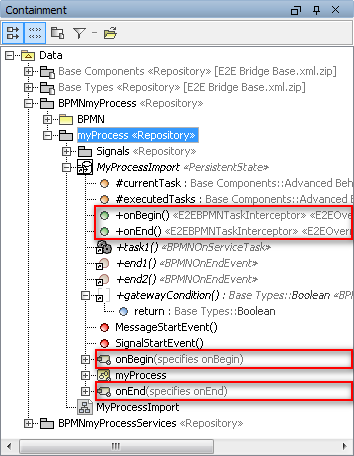|
BPMN shape |
BPMN description |
|---|---|
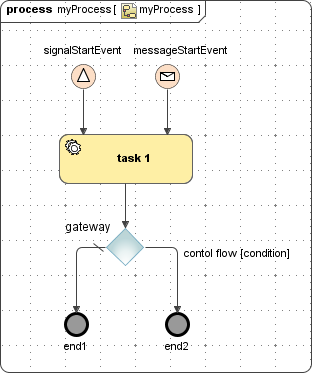
|
A Start Event indicates the entry point of a business process. It is the point from which a business process instance will be created. A process might have several start events.
|
|
UML representation |
UML description |
|---|---|
|
This process of invoking a business process instance is mapped to two state machines. |
|
|
Root State Machine |
|

|
The first (root) state machine invokes the process state machine.
|
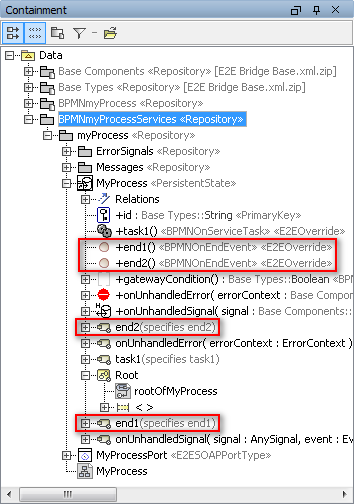
|
The Root state engine will call an end event handler (an overridable operation) for each end event occurring. |
|
|
The overridable operation consists of an activity containing a simple logging to the bridgeserver log that can be changed or extended as needed. |
|
|
Additionally, the imported module contains an onBegin() and a onEnd() operation, which are called on each start of a task respectively on each task end.
|
|
Process State Machine |
|
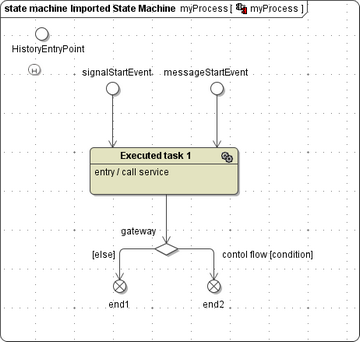
|
The second state machine corresponds to the effective process.
|

